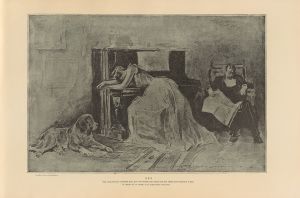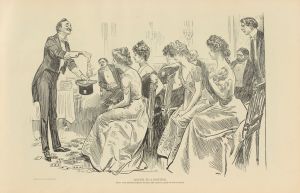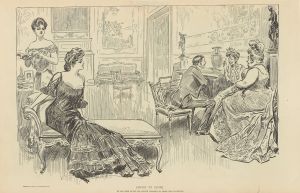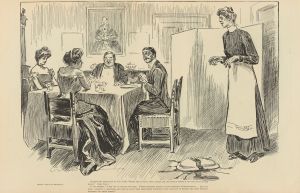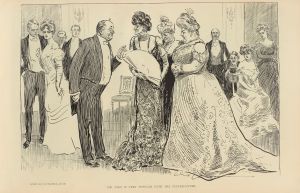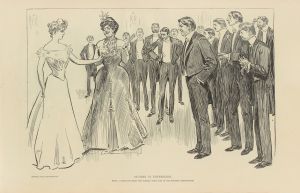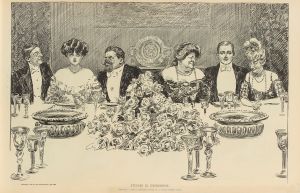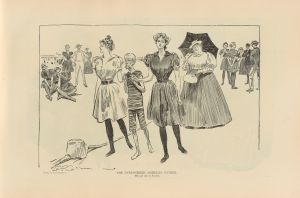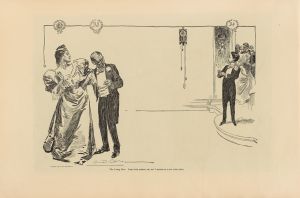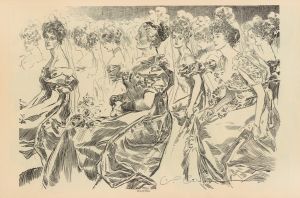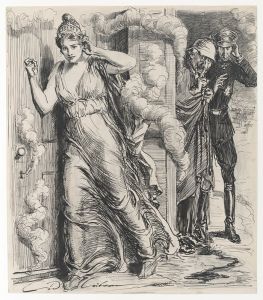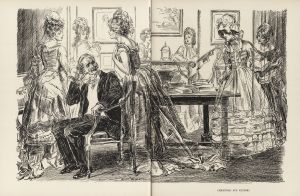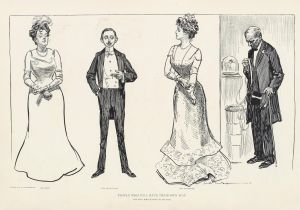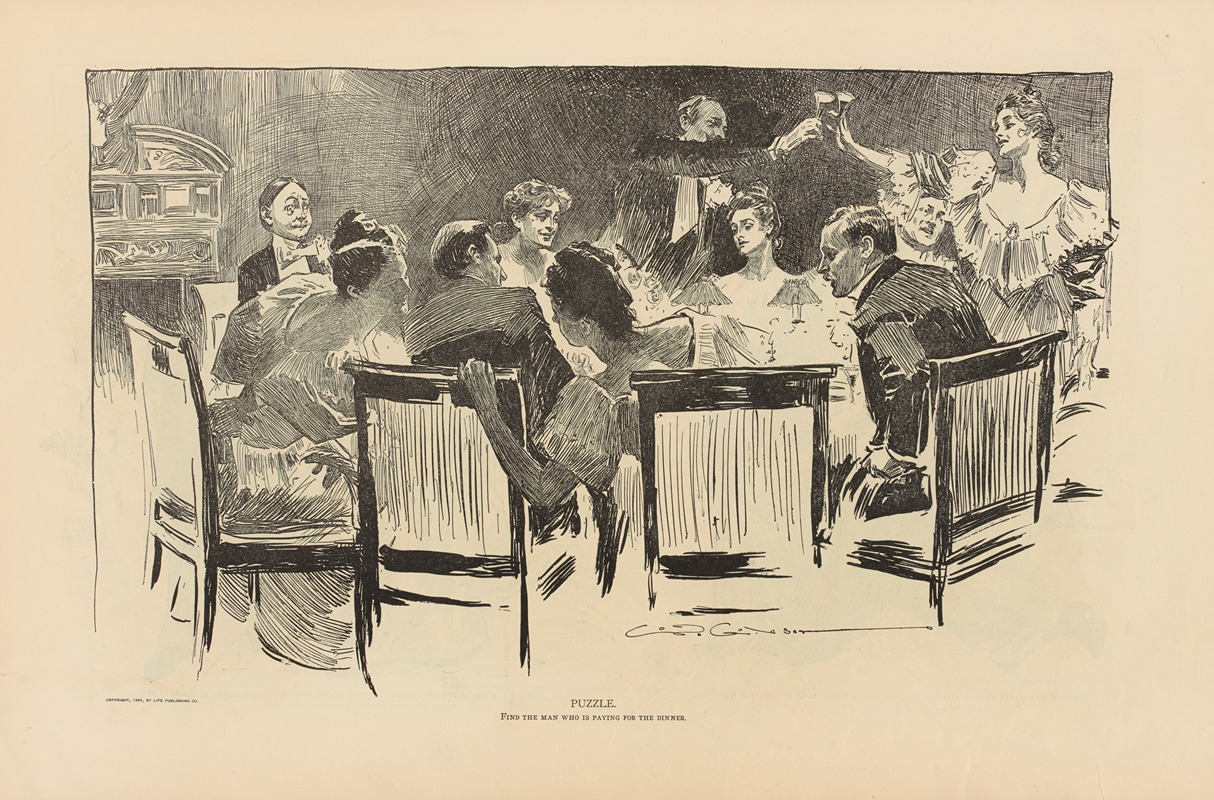
Puzzle. Find the man who is paying for the dinner
A hand-painted replica of Charles Dana Gibson’s masterpiece Puzzle. Find the man who is paying for the dinner, meticulously crafted by professional artists to capture the true essence of the original. Each piece is created with museum-quality canvas and rare mineral pigments, carefully painted by experienced artists with delicate brushstrokes and rich, layered colors to perfectly recreate the texture of the original artwork. Unlike machine-printed reproductions, this hand-painted version brings the painting to life, infused with the artist’s emotions and skill in every stroke. Whether for personal collection or home decoration, it instantly elevates the artistic atmosphere of any space.
Charles Dana Gibson was an influential American illustrator, best known for creating the "Gibson Girl," an iconic representation of the American woman at the turn of the 20th century. One of his lesser-known works is "Puzzle. Find the man who is paying for the dinner," which showcases his characteristic style and social commentary.
Gibson was born on September 14, 1867, in Roxbury, Massachusetts. He studied at the Art Students League in New York City and began his career as an illustrator in the late 1880s. His work gained significant popularity, appearing in major publications such as Life, Harper's Weekly, and Scribner's. The "Gibson Girl" became a cultural phenomenon, symbolizing a new standard of femininity and independence.
"Puzzle. Find the man who is paying for the dinner" is a black-and-white illustration that reflects Gibson's keen observation of social dynamics and his ability to capture the nuances of human interaction. The artwork depicts a lively dinner scene, filled with elegantly dressed men and women engaged in conversation. The challenge posed by the title invites viewers to scrutinize the image closely, searching for clues about which character is financially responsible for the gathering.
Gibson's illustrations often contained elements of humor and satire, and this piece is no exception. By turning the act of identifying the host into a puzzle, Gibson playfully critiques the social customs and gender roles of his time. The drawing captures the opulence and formality of upper-class society, with detailed attention to fashion and posture, which were hallmarks of Gibson's style.
The illustration is a testament to Gibson's skill in storytelling through art. His ability to convey complex social interactions with a single image made his work both entertaining and thought-provoking. While "Puzzle. Find the man who is paying for the dinner" may not be as widely recognized as his "Gibson Girl" series, it exemplifies his talent for blending art with social commentary.
Throughout his career, Gibson's work had a significant impact on American culture. His illustrations not only entertained but also offered insights into the societal norms and expectations of his era. Gibson continued to produce art until his death on December 23, 1944, leaving behind a legacy that influenced generations of artists and illustrators.
In summary, "Puzzle. Find the man who is paying for the dinner" is a fine example of Charles Dana Gibson's illustrative prowess and his ability to engage viewers with both visual appeal and intellectual challenge. The piece remains a fascinating glimpse into the social fabric of the early 20th century, showcasing Gibson's enduring influence on the world of illustration.





